STUTTGART, Germany – A wide gray gate slowly swings open to a downhill driveway that leads into what looks like a small factory. There’s no sign to identify the occupant company, and despite tall windows spanning the building’s first and second floor, the lower two-thirds of those on the bottom are glazed white to prevent peering eyes. There are similarly nondescript buildings on either side and a Mitsubishi dealer across the street. There’s no way in hell you’d drive by and think anything of it.
But then one day you’re lucky enough to see what’s at the bottom of that driveway beyond a large garage door and, well, take it away photo gallery.
This is basically where Porsche keeps all its greatest hits, rarest treasures and noteworthy four-wheeled pieces of history. Everything is special for one reason or another: rare special editions, unique configurations, winning race cars, examples of significant advances, concept cars, test mules and even cars built by different companies that Porsche had a hand in developing. While many find their way into Porsche’s grand, open-to-the-public museum in nearby Zuffenhausen, there’s no way it could all fit there.
This is now the second time I’ve been lucky enough to visit, with a genuine emphasis on lucky. Last time, I took the photos in the above gallery. This time, I’d be doing a lot more than that: I’d be driving several of those noteworthy four-wheeled pieces of history. Now, I wasn’t so lucky as to have my pick of the litter, but instead, Porsche’s team responsible for the 718 Spyder RS press launch put together a tasting menu, so to speak, of past Porsches that were similarly firsts of their kind or special, highly-focused performance models.
Throughout this week, I’ll be sharing what it was like to drive each of them. Admittedly, I don’t have a great deal of experience driving pre-1990 cars, and one of this selection would indeed become the oldest car I’ve ever driven. This is about sharing this lucky experience and some of what I learned along the way.
Car No. 1
1981 Porsche 928 S 50-Year Anniversary Edition
If, like me, you have a hard time keeping track of Porsche’s endless three-number model names and internal reference codes, the 928 was the first front-engined model Porsche engineered (though it was beaten to market by the entry-level 924). It was originally intended to be the 911’s replacement, as sales of Porsche’s sports car were trending downward in the 1970s and switching to a more traditional, front-engined, V8-powered, GT-style car seemed like a more palatable choice for luxury customers than the oddball 911. Obviously, this thinking changed and both cars would be sold side-by-side along with subsequent front-engined models.
This particular 928 is a museum piece because it was one of only 140 special-edition 928s built to celebrate Porsche’s 50th anniversary in 1981. Its configuration of unique Meteor Metallic paint and striking wine-colored leather interior with striped cloth upholstery (and Ferry Porsche’s signature embroidered on the headrests) could not be ordered even by special request. It is therefore very rare.
The 928 was also the car I most wanted to try. It’s just so different from the Porsche brand I’ve come to know in the past 15 years of reviewing cars: sports cars with the engine behind the driver, sedans and SUVs, and even the electric Taycan. Porsche doesn’t sell front-engine, two-door GT cars anymore, which is a shame, because they’re basically my favorite kind of car. It was intriguing, and I wanted to see how recognizable it was as a Porsche given what came after as well as its fundamentally different contemporary, the 911 (the only classic Porsche, a 1985, I had driven prior to this event).
I climb inside and am immediately impressed by its distinctive color scheme and timeless, attractive design. Then it makes me laugh. I look down at the shifter to discover it’s a dogleg layout with first down below reverse, and second where first usually is.
“Five bucks says I drop this into reverse by my third time taking off from a stop,” I say to the car’s museum handler, who doesn’t seem to be amused. German humor’s different, you know.
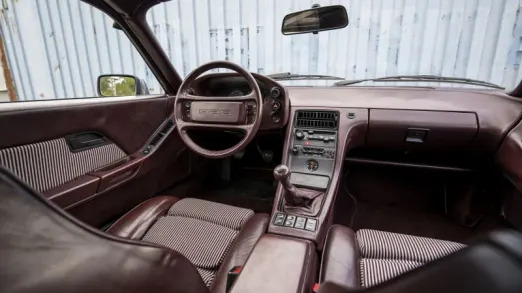
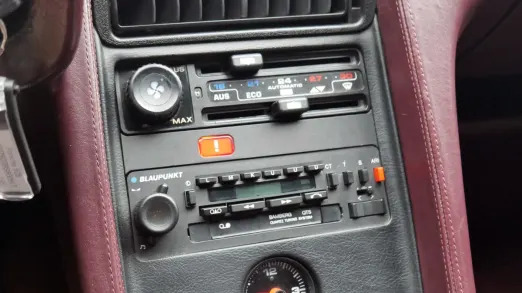
The labels on the Blaupunkt radio might as well be written in hieroglyphics. What looks like radio preset buttons that should be 1-6 are instead marked L-M-K-U-U-U. There are also CT, T and S buttons, plus a red one labeled ARI. Probably something to do with Arizona. Of course, I have no intention to put on the radio, but it’s indicative of the alien landscape I’ve just plopped myself into.
My head grazes the leather headliner, so I twist the recline wheel beyond my usual position. It’s a bit Fat Joe for my liking, but unlike the other cars I’d drive on this little adventure, at least the 928’s steering wheel actually adjusts. Tilt only, but the instrument pod comes along with it. So, no, the Infiniti G35 was not the first car to have this.
I drop the parking brake located in between the driver seat and door sill, and successfully remember where first gear is. You have to push through a detent to the left before getting down there, much as you do in gearboxes today that put reverse in the upper left (including those of modern Porsches). The clutch is surprisingly light and easy to modulate, but the gearing is odd. You stay in first much longer than you’d expect – it’s almost like a mix of first and second. That makes second feel more like third, something I’d come to find is typical for Porsches of this era. Finding second can be tricky, though, and its engagement isn’t always ensured. Sliding down from second to third is easy cheese despite the long throw of the short lever, but downshifting into third requires some concentration since the shifter doesn’t pop back to center by itself when you move it out of fourth. It wants to stay in line with fifth. I quickly get the hang of it and ultimately lose my own bet: I never put a gear wrong.
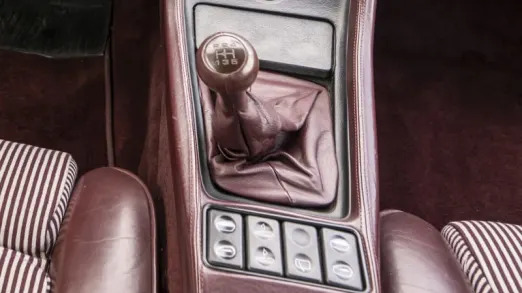

I am very warm, however. It’s chilly in Stuttgart and the heater was kindly turned on before I jumped in the car, but now I have no idea how to turn it off. I slide the temp slider far to the left, but now it’s blowing cold air at me. I try to turn the fan wheel as far to the left as possible, figuring “AUS” means “OFF” in German (it does), but that doesn’t really work. I’m basically left to choose between cold or hot air. I choose cold, point the vents away from me and focus on driving this rare Porsche on the Autobahn.
I approach a tunnel. Crap, I didn’t think to see where the lights were (I was too distracted by that Arizona button). There’s a big light bulb knob to the left of the instrument panel. OK, how does it work? Maybe pull it out like the light knob in my ’98 Z3 and other older cars? Nope, the knob comes completely out of the dash board. Oops. Back it luckily goes. Let’s try turning it! A long German word in the speedometer illuminates in green but the headlights don’t come on. Twist again? Ah ha! The little headlight orbs lift themselves forward out of the hood and suddenly remind me of one of the 928’s defining attributes.
(By the way, the 911 and 959 have a similar light knob ... except you pull it to turn on the lights. Consistency was clearly a top priority at Porsche in the '70s and '80s)
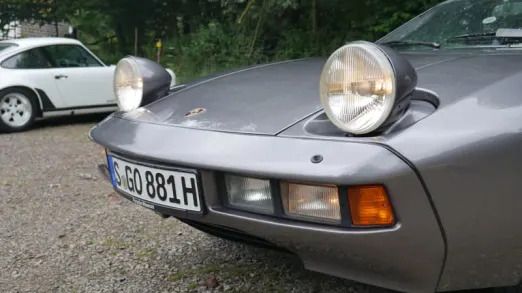

With the tunnel ahead now illuminated, I suddenly find myself needing to change lanes for an off-ramp ahead. I check the passenger mirror, which thankfully exists, but is quite frankly junk. Objects in mirror are farther than they appear. Thankfully, there’s an aquarium of glass over my shoulder, which eliminates any blind spot. The 2024 Spyder RS I drove the day before was a submarine by comparison.
Once off the Autobahn and onto a gently winding country road, I discover the steering to be slower on turn in than a modern car, which is generally normal for German cars and those with hydraulic steering. There’s decent feel, too, though I didn’t exactly push the car as drizzle began to fall. The brakes are reassuring with a solid, easily modulated pedal that’s mounted, like the clutch, much as you would expect. Commenting about this now will make sense after reading about my experiences with the other cars.
The 300-horsepower 4.6-liter V8 provides lovely low-end power and sharp throttle response, but doesn’t really sound like a V8 – it sounds more like a quintessential Porsche engine. Maybe not a flat-six 911 warbling away behind you, but it’s in the family. The 928 in general, however, feels more like long, lost cousin Oliver. Maybe it’s the grand touring format, the era, the design or all of the above. I very much like it, however. After all, my automotive tastes do run closer to the 928 than the 911. Then again, maybe that was about to change.
Car No. 2
1991 Porsche 944 Turbo Cabriolet
At first glance to those who need Wikipedia to keep their Porsches straight, the 944 seems like it would be related to the 928. Both are long-nose, short-deck, two-door cars, and definitely not a 911. The 944 was derived from the earlier 924, however, which was the first front-engine Porsche that went on sale (the 928 was just planned and designed first,). Its development started as a joint venture with Volkswagen, which would cancel the project, leaving Porsche to develop the 924 as its new, entry-level sports car. To that end, it initially featured a Volkswagen/Audi 2.0-liter four-cylinder engine, and its construction was even subcontracted to Volkswagen. It went on sale for 1976.
In 1979, a turbocharged version of that VW-engine 924 was introduced. It was quite expensive, though, leading Porsche to rechristen the car the 944 for its debut in 1982. It also dropped in a new, 2.5-liter turbo-four that was mildly faster than the 924’s VW-sourced turbo. The car was also more refined and provided better handling and stopping.
The first 944 Cabriolet (aka convertible) wouldn’t arrive until 1989, which makes sense as it wasn’t an easy thing to achieve. Each Cabriolet began life as a coupe, which was removed from the production line and sent to a third-party coachbuilder to chop off the roof and reinforce the body. It was then sent back to the Porsche production line to be finished. To be clear, this is not how convertibles are usually made. The car I drove is a 944 Turbo Cabriolet, which was only produced in the 944’s final year of 1991. Only 528 were ever made, so yep, rarity is this Porsche’s claim to fame. It combined the rare Cabriolet body style with the 944 Turbo (note the capital T) introduced for 1986 that featured an upgraded version of the standard 944 engine. By ’91, it produced 250 hp and 245 lb-ft of torque.
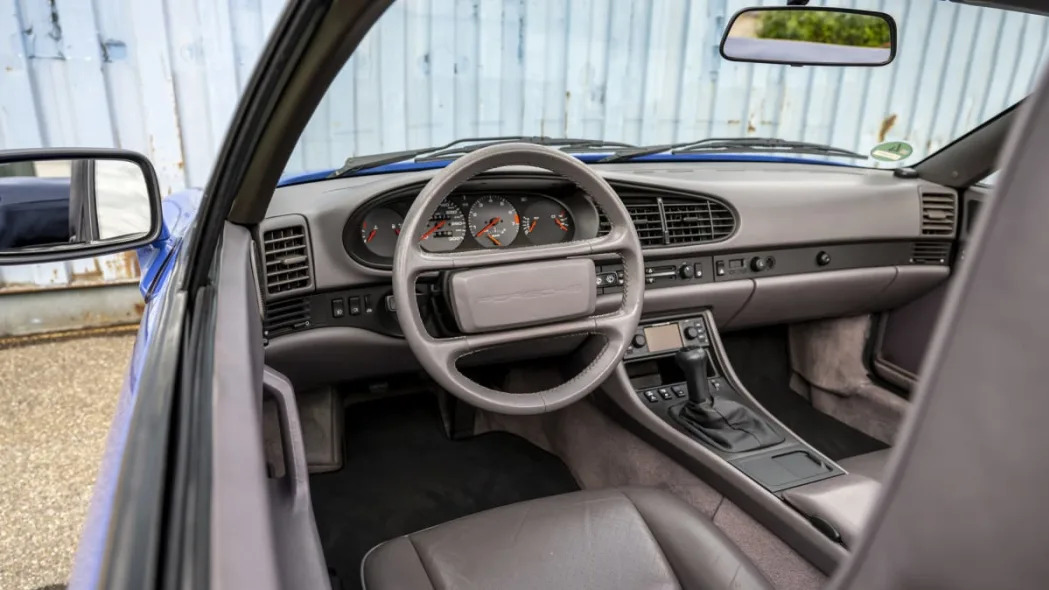
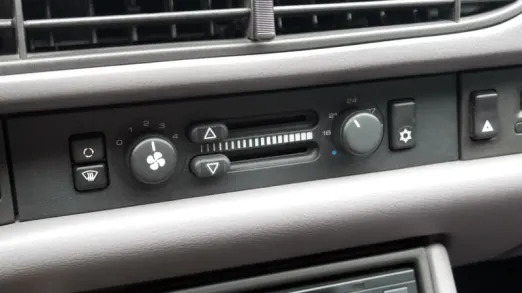
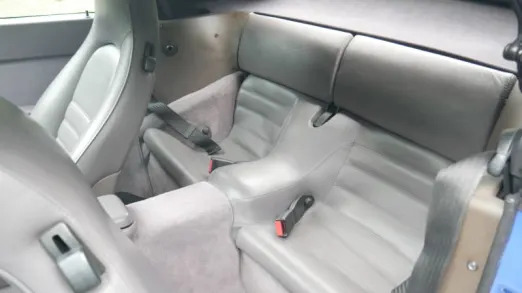
Though the exterior design is even less Porsche-like than the 928, the interior is far more recognizable. From the switchgear to the overall design, this seems like it sprang from the same car company that would produce the Boxster and 996 911 (the first of the modern, water-cooled models). Importantly, and less interestingly, I also understand how everything works. The handbrake is still between the driver seat and the door, but the shifter is normal, the climate controls are modern and the radio doesn’t require Dan Brown to decipher. Oh, and the headlights pop up with the same twisty knob. The driver seat offers loads of power adjustment, providing my long legs with plenty of room and support, but the wheel is fixed. The back seat makes a modern 911’s look like a Panamera’s.
It’s important to underline that the turbocharged four-cylinder is not a boxer as in today’s 718 Boxster and Cayman, but a more typical inline. It sounds like it, for the better I would imagine most would say (the term “Subaru” has been liberally thrown around when describing the 718’s 2.0- and 2.5-liter boxer-fours). The power delivery is profoundly different than today’s myriad turbocharged inline-fours, though. The turbo does not provide that initial kick of low-end torque off the line. Instead, nothing really happens before 3,000 rpm. Early on in my drive, I brake going into a 270-degree hairpin with a hill beyond. I downshift into second as I typically would and the car just bogs south of 2,000 rpm. Wait, wait, wait and finally, 3,000 rpm arrives on the tach. When the turbo finally kicks in, it does so progressively as opposed to a sledgehammer of boost slamming you into your seat.
The steering wheel has the same basic design as the 928’s and various 911s, but it’s much smaller. Delightfully so, actually. It has the usual “Autobahn slop” of being numb on center before you turn in to greet a stiffer amount of resistance. Loads of feel is present.
Perhaps paradoxically, I like driving the 944 Turbo Cabriolet better than the 928, but I like the car less. It’s easier to drive and everything is just more normal, from the driving experience itself to comprehending how the car works. It’s less endearing, though, perhaps because of its lack of quirks that make the experience more interesting.
As they say, though, be careful what you wish for. My next Porsche would be the most interesting by far: the famed 959.
Car No. 3
1988 Porsche 959
I may easily confuse Porsche’s endless array of 900 model names, but not the 959. I was already well aware of what it is and why it’s one of the most famous and influential cars, period, let alone Porsches. It’s a legend. Quite simply, the 959 pioneered technologies that are now commonplace. It has an electronically controlled all-wheel-drive system that can differ the amount of power going to each axle based on four modes, including a rain setting that I would use as it was indeed raining (oh good, not like this car is worth a lot or anything). It has a hydraulically controlled adjustable suspension with three settings engaged by a turn of a center console dial or automatically based on speed. A fully enclosed underbody and air ducting ensured a super-low (for the time) 0.31 coefficient of drag. It also had a 2.8-liter twin-turbo boxer-six good for 450 horsepower that allowed the 3,197-pound 959 to go from zero to 100 kilometers per hour in 3.9 seconds. Those are numbers that would make it competitive with Porsches of today, yet I would like to remind you, that this car was produced from 1986 to 1988. “Ahead of its time” would certainly apply.
And yet, the 959 immediately feels so much older than the 944 and even the 928. For starters, it’s quite obviously built off the 911, which was indeed a much older car. The interior layout looks antiquated compared to those front-engined Porsches, but that’s just the start of it. The clutch is impossibly heavy with a hair-trigger engagement point way up high. Somehow, I never stall the thing or embarrassingly rev the engine sky-high before properly finding that engagement point. The gearbox shows reverse in the upper left, the letter G where first should be and first where second should be. Huh? I’m told G is apparently for off-roading, and by “off-roading,” they mean that the 959 raced in the 1984 Paris-Dakar Rally. In practice, G seems to be a little easier to get the car going from a stop than first, but in terms of gearing, they seem similar. Furthermore, second gear is nuts – the tach shows only 4,800 rpm at 100 kph. As in the 944, I downshift into first in hairpins. Weird.
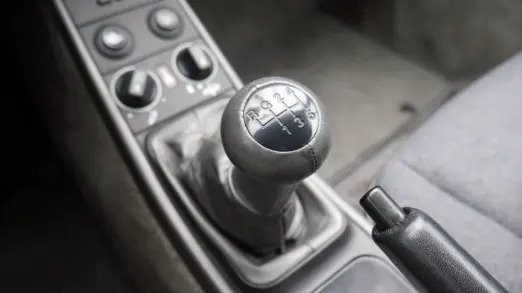
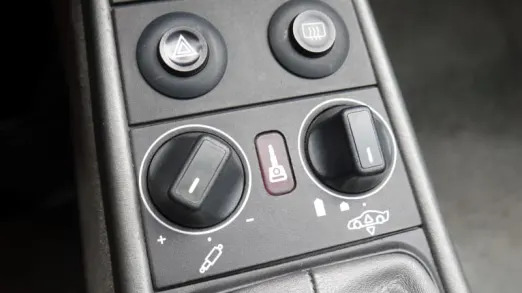
The brake is a similar Thighmaster affair, and worse, both are floor-mounted as in the contemporary 911, resulting in two more elements that my muscle memory is not expecting. Again, weird.
The steering is stiff and not especially fluid in its movement. It feels crude. In total, operating the 959 is a workout, requiring both muscle and precision. I can certainly see how some would find that rewarding, especially as they contend with the power delivery. Not unlike the 944 Turbo Cabriolet, the power doesn’t really come on until the tach hits 3,000 rpm. That’s just the first turbocharger, though. The second one kicks in at about 5,000 rpm, at which point things go berserk. This is a scary-fast car.
It's nice to know the all-wheel-drive system is aboard, then, and in less demanding moments, I note the two little gauges that indicate where the power is going at any given moment. That would be one of those pioneering, ahead-of-its-time elements. The other would be the adjustable suspension, and although I could certainly detect a difference, it’s very subtle. Not unlike today’s Cayman GT4, actually.
This particular 959 is one of only 292 that were ever built. That rarity and its historical importance make it one of the most valuable cars in Porsche’s collection. And yet, it’s my least favorite on this day. The 959 just isn’t for me. It’s way more hardcore than it looks, and far less sophisticated than its specs and modern-sounding componentry would suggest.
Car No. 4
1963 Porsche 356 B
The 356 was Porsche’s first production automobile. It debuted for 1948 and by 1963 had evolved into the car you see here: a 356 B Super 90. One more refresh would turn it into 356 C for ’64 and ’65 before being replaced by the 911.
May the record show that the 1963 Porsche 356 B Super 90 is now the oldest car I’ve ever driven, supplanting a 1965 Ford Mustang convertible. That pair may only be two years apart, but they couldn’t be more different. The Mustang had seat belts for one. The 356 B would therefore be the first car I’ve driven without seatbelts and it was not a good feeling. Not that some 1960s lap belt would do much considering my legs are the 356’s crumple zone, but sometimes a placebo is better than nothing.
I plop down in the springy, mushy seat that rocks back and forth. The left side of the seat bottom doesn’t have much structure left despite being a low-mile museum piece. There’s surprisingly enough leg- and headroom for all 6-foot-3 of me, however. I take a moment to acquaint myself with the controls. There’s no radio, so nothing to worry about there, and while the HVAC seems simple enough, the crank windows are even simpler.
The parking brake resembles the thin metal top of a walking cane. Mounted just below the ignition, which is on the left side as in the 911 and all of today’s Porsches (but not the earlier driven front-engined models), you twist and pull the handle to then release the brake that goes down into the foot well. You twist and pull it back up again.
The wheel is huge, thinly spoked and looks incredible with its black rim and beautiful Porsche crest. It doesn’t adjust of course, but this time, that’s not that big of a deal. I have other controls to worry about. The shifter … well, why don’t I just go to the video.
View this post on Instagram
Though strange, the transmission’s actually much easier to operate than others here. The 356 B in general isn’t hard to drive, but I do keep my time behind its huge wheel shorter than the others. The roads are damp and although there’s only 90 hp on tap (hence the “Super 90”) and the tires are actually modern, the brakes are nowhere close. Frankly, I’m just not enjoying this experience. It’s a bit terrifying, actually. I feel vulnerable and ill-able to respond in a way should something go awry.
People actually enjoy driving these? And I just don’t mean that in regards to today. Driving one of these around in America of 1963 would’ve been terrifying, too.
Car No. 5
Porsche 911 Carrera 3.2 Clubsport
And for the grand finale, the grandfather of all modern Porsches, the 911. Specifically, a 3.2 Coupe Clubsport pre-production vehicle from 1985, which is roughly similar to a Carrera T or GTS of today. Officially produced from model years 1987 to 1989, this lightweight model sacrificed creature comforts for weight savings – specifically 100 kilograms is saved by jettisoning the air conditioning, power seats, power windows and locks, sound deadening, the back seats, door pocket covers and the passenger sun visor. The 3.2-liter boxer-six was then enhanced to rev 320 rpm higher than the standard engine, up to a lofty-for-the-time 6,840 rpm. It produced 231 hp and hit 60 mph in 6.1 seconds, which was damn fast for 1985. That the 959 did it in 3.9 makes that car even more ludicrous.
The Clubsport’s suspension was lowered by 30 millimeters (not unlike the Spyder RS) with special shocks and a limited-slip differential added. Only 189 of these were produced, not including this car, which is a pre-production model saved from the crusher.
Oddly, the only other classic 911 I’ve driven also hailed from 1985. I drove that car once, was appalled by its gearbox (a bit like the 356 B’s come to think of it) and found I couldn’t fit inside because of the sunroof. It felt crude and not worth the effort to find out what the big deal was.
This is a very different Porsche 911 Carrera from 1985. To begin with, the Clubsport had the superior, next-generation G50 gearbox that makes a world of difference and was in fact the crispest sampled today. It takes some muscle to get it into place, but there was no mystery as to where I should be going. OK, so you’ll have to ask your passenger to move their leg to engage fifth, but you’re buddies, right? The pedals are floor-mounted because 911, which makes for tired ankles, but the efforts are livable. I would actually end up driving the Carrera Clubsport in stop-and-go traffic and it was just fine.

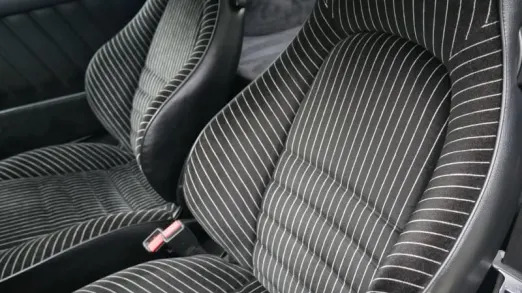
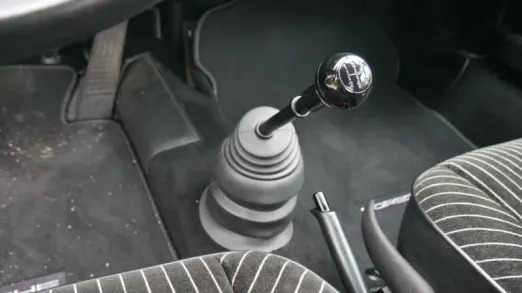
It was far more than fine on the open stretches of winding country roads where I got to sample each of these classic Porsches. The engine and gearing are most in sync with each other, and the naturally aspirated power delivery is progressive and consistent. Power builds naturally past 5,000 rpm with a crescendo of beautifully angry flat-six noise that lives on in Porsche’s naturally aspirated flat-sixes of today. I routinely kept it in a lower gear just to listen to it and revel in the immediate response at higher rpm.
The steering is the best of the day. Though light on center like the others, it’s not Autobahn-intended numbness (twitchy steering isn’t ideal at 150 mph). There’s nuance, you can totally feel what’s happening. Weighting increases with turn-in, and again, there’s loads of feel. I can sense the benefit of the front wheels being unburdened by motivating the car as well as the weight of an engine.
Tighter, technical roads are definitely not its forte, but when things transition to longer, higher-speed sweepers, the 911 comes into its own. Slow in, fast out as they always say. The more I drive, the more comfortable I get with what the car can do, and the faster I can go. The more fun I have, too.
The 911 Carrera Clubsport may be missing creature comforts, but I was comfortable enough in the 80s-tastic black pinstripe seats, it wasn’t hot enough for air-conditioning to matter, and what are the odds a 1985 stereo would be any good? Or comprehendible? A Bluetooth speaker would get the job done … or just listen to that angry boxer-six.
As much as I was looking forward to trying out Porsches not called 911, turns out that I liked driving the 911 the best. And I liked it quite a bit.
Back to the Garage
So that was my day driving classic Porsches around the hills and mountains surrounding Stuttgart. Thanks for joining me, and my notebook, this week. I hope I provided a taste of what they’re like, especially their fascinating oddities. Classic cars are obviously something we don’t get to cover as much at Autoblog, but while we primarily focus on what’s next around here, I think it’s valuable to look back on what was, too. I’d certainly like to do it more.
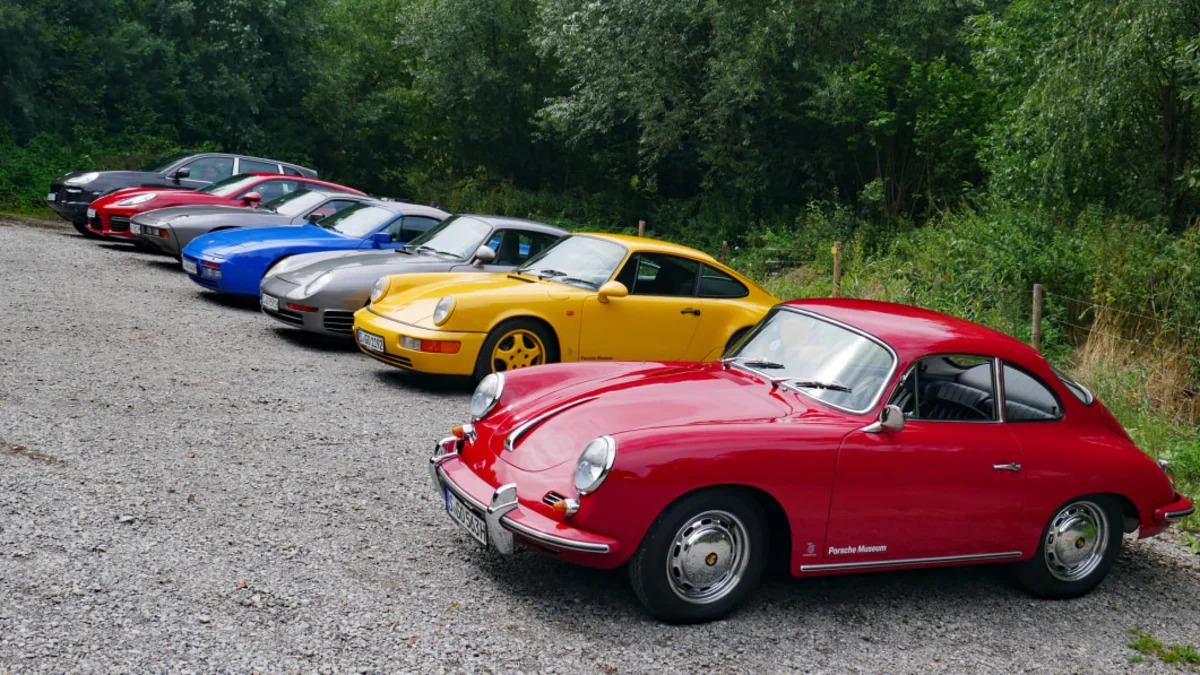

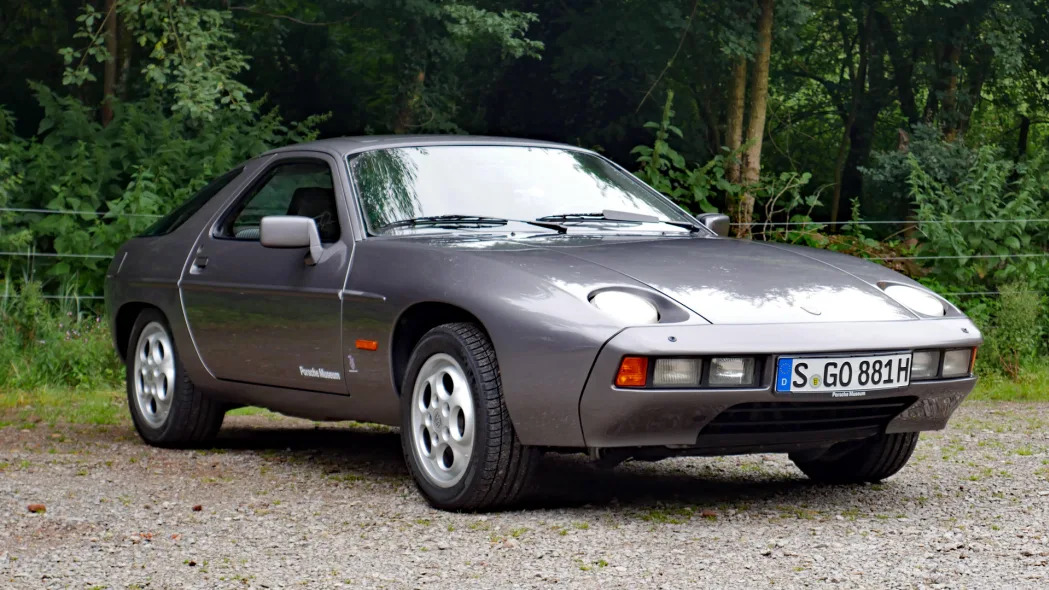
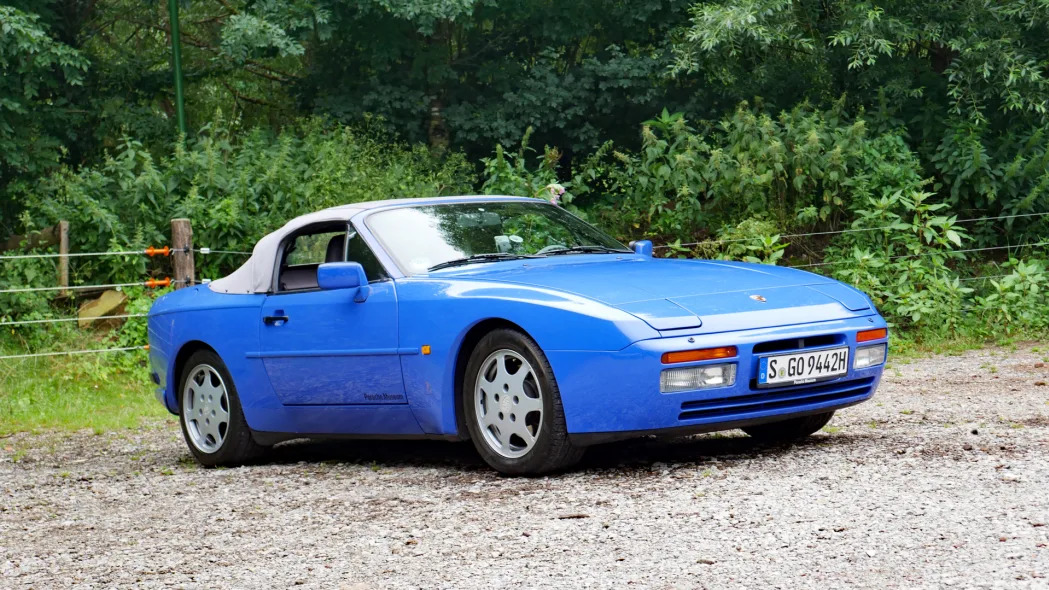
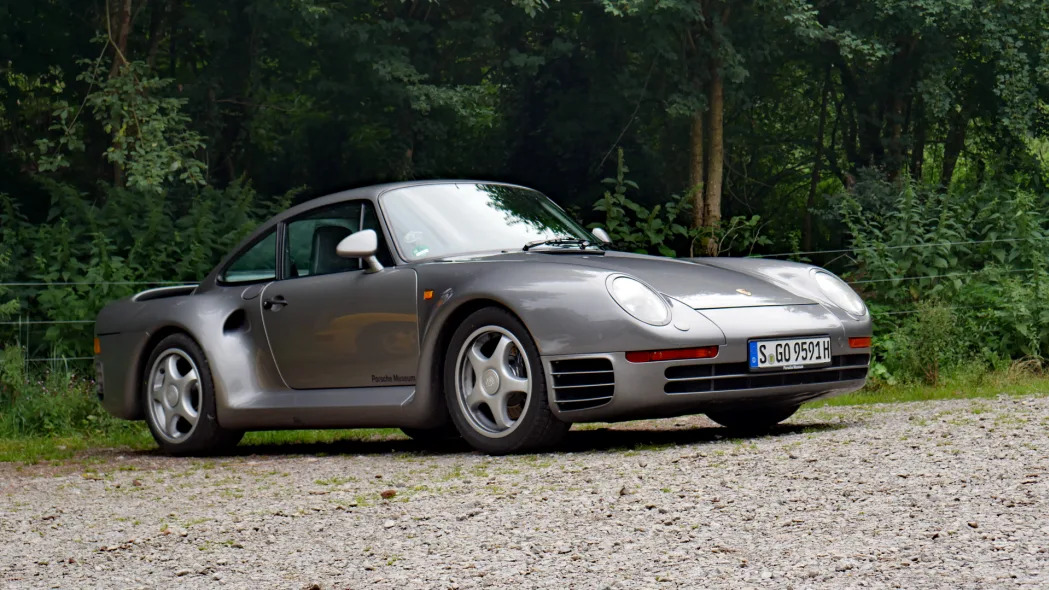

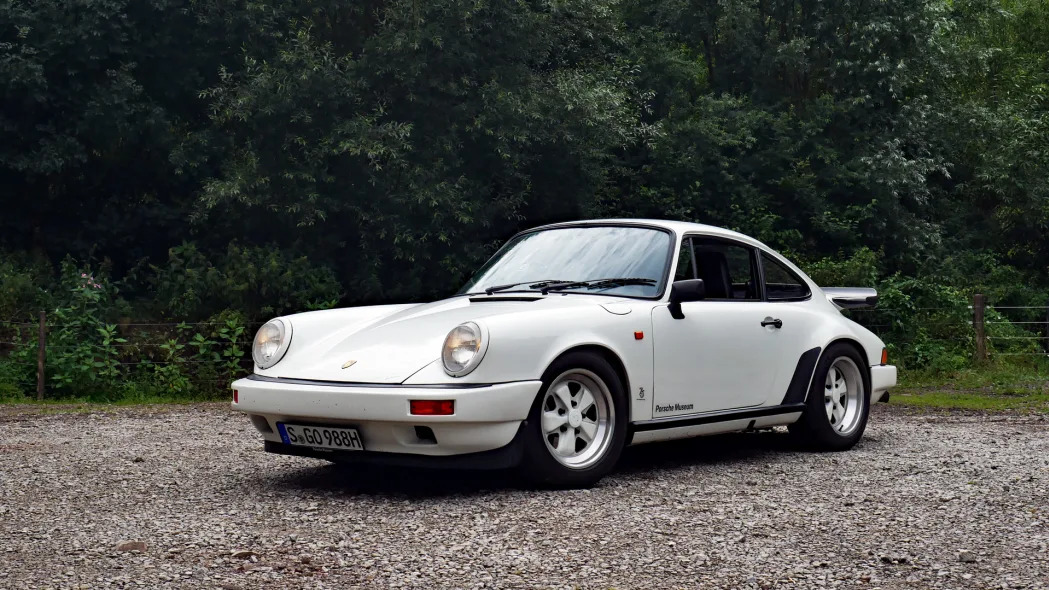

Sign in to post
Please sign in to leave a comment.
Continue